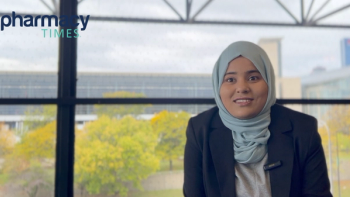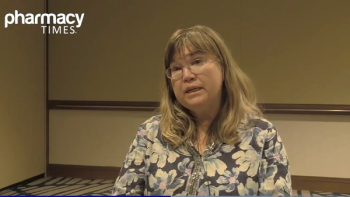
Recap: 2024 American Association of Colleges of Pharmacy Annual Meeting
Key Takeaways
- Pharmacy students show growing interest in non-direct patient care roles, highlighting the need for business skills and diverse career opportunities.
- Educators stress integrating social determinants of health into curricula, using experiential learning to enhance student understanding and application.
The 2024 American Association of Colleges of Pharmacy Annual Meeting took place from July 20 to July 23, 2024, in Boston, Massachusetts.
Pharmacy Students’ Interest in Non–Direct Patient Care Roles Grows
In a session at the 2024 American Association of Colleges of Pharmacy Annual Meeting, approximately 20% of students said they would not want to study pharmacy again. However, Kathryn Morbitzer, PharmD, MS, associate professor at the University of North Carolina Eshelman School of Pharmacy in Chapel Hill, said there is potential for pharmacists to use their roles in health care in more diverse ways, with non–direct patient care areas expected to grow in the next 10 years.
In a survey of 271 registered pharmacists, 85% confirmed that they use business skills every day, but there is a lack of knowledge, and they feel less confident in business compared with the pharmaceutical aspect. With current and emerging opportunities, more education on needed skills can help bridge these gaps. Morbitzer discussed the domains that need to be highlighted: the health care ecosystem, pharmacy distribution, finance and analytics, management and operation principles, innovation, and entrepreneurship.
Ultimately, the presenters said more student organizations and peer-led initiatives in career exploration or networking are needed at the educational level in pharmacy school to help prepare students for myriad non–direct patient care careers.
Social Determinants of Health Are as Important as Clinical Content in Curricula
Tara P. Driscoll, PharmD, clinical assistant professor and clinical pharmacist at University of Illinois at Chicago, discussed social determinants of health (SDOH) in a session at the 2024 American Association of Colleges of Pharmacy Annual Meeting.
She explained what pharmacists can do for patient care and how to teach students in the experiential setting. She has students identify physical and patient-specific factors for each individual and integrate sociobehavioral, socioeconomic, and cultural beliefs and values for every patient the students encounter.
Driscoll added that educators should discuss how a treatment plan works for a specific patient and how SDOH would impact the treatment plan. She said the best way to have students thinking about SDOH is to model how to integrate SDOH into practice, introduce and reintroduce SDOH to students, coach students on integration of SDOH into patient care, and debrief with students and provide feedback in the experiential setting.
Education Curricula Need to Incorporate Whole-Person Care Beyond Electives
Whole-person care is a holistic care approach that addresses multiple aspects of a patient, including physical, behavioral, spiritual, and socioeconomic well-being, specifically defined by individuals, families, and communities and not by guidelines, Kashelle Lockman, PharmD, MA, clinical assistant professor and clinical pharmacy specialist at the University of Iowa College of Pharmacy in Iowa City, said in a session at the 2024 American Association of Colleges of Pharmacy Annual Meeting.
She said her students view whole-person health as a gap in curriculum and that one student said they received training only in an elective. Gaps in literature were also identified, with cases in teaching often including disembodied patients, defined by the presenters as patients who have undifferentiated race, binary gender, heteronormative sexual orientation, traditional relationships, and the absence of disabilities.
Maria Lowry, PharmD, BCPS, BCGP, assistant professor at the University of Pittsburgh School of Pharmacy in Pennsylvania, highlighted how in the classroom and other settings, it is important to use person-first language and avoid defining a patient based on their medical condition. Neutral, nonjudgmental language is preferred. She gave examples of phrases and words to avoid, including diabetic, homeless patient, and addict. She said it is best to use terms such as person with diabetes, housing insecurity, and substance use disorder, which helps to identify the patient as a person first, not a medical diagnosis.
“[Teaching] really starts with us; actions speak louder than words—the way that we carry ourselves both inside the classroom and in patient care settings,” Lowry said. “Students take away arguably more from what they see us doing than from what our slides read.”
Newsletter
Stay informed on drug updates, treatment guidelines, and pharmacy practice trends—subscribe to Pharmacy Times for weekly clinical insights.



















































































































































































































